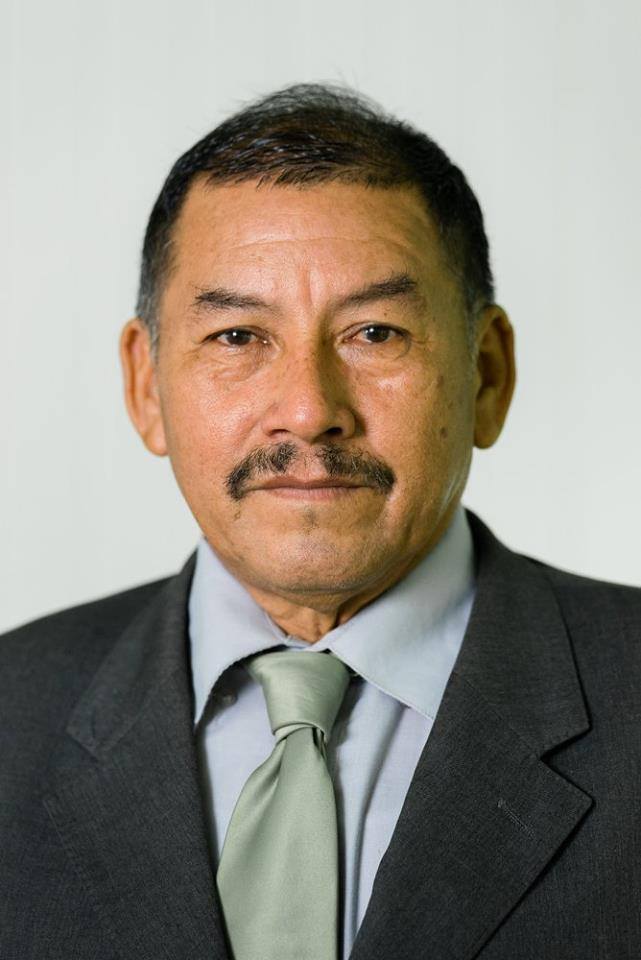The setting up of five community radio stations in hinterland communities, the rolling out of the Hinterland Employment and Youth Services (HEYS) programme and the sundried tomato project at Paramakatoi in Region Eight (Potaro/Siparuni) are among the achievements of the Ministry of Indigenous Peoples’ Affairs, according to Senior Minister Sydney Allicock.
Allicock told Sunday Stabroek that work is also underway in Region One (Barima/Waini) for a $10 million ground coffee project at Santa Rosa, a $10 million cassava flour factory at Kwebanna on the Waini River, and a crab and fish processing facility at Smith Creek.
Noting the community radio stations that have been set up in strategic areas in the hinterland, Allicock said, “Communication is a big thing for us and people are upbeat about being in the know as they get live feed from Georgetown. The communities are getting live coverage of World Cup football on radio when they cannot get it on television.”
The five new radio stations are at Aishalton, Lethem, Mahdia, Mabaruma and Orealla. One was previously established at Bina Hill, Annai in 2000.
Junior Minister Valerie Garrido-Lowe, who has the HEYS and sundried tomato projects in her portfolio, said those projects were meant to give Indigenous Peoples a sustainable income and to develop their communities. “Previously, all they did was sustainable farming,” she stated.
Since the sundried tomato project was launched in 2017, students from Paramakatoi, who underwent training at Bina Hill, are now at the Institute of Applied Science and Technology (IAST), engaged in learning the art of bottling and packaging products.
The tomato project started with 40 farmers and has now grown into a cooperative of 135 farmers.
“Even the headmistress is planting tomatoes,” Garrido-Lowe said. “The Opposition was saying that we were using the people and exploiting them for $20 a pound. Sometimes tomatoes go for as low as $30 a pound. We paid them $148 a pound at the end of the process.”
Several government ministries and agencies, including the Ministry of Agriculture, IAST, National Agricultural and Research Institute, and the Department of Cooperative of the Ministry of Social Protection, which also provided training in food processing through the Board of Industrial Training, assisted in the project at various levels.
“You marry traditional farming with modern science and you create a product – tomato ketchup which nobody in Guyana has created yet but the Patamonas have done it. They are very proud of it,” Garrido-Lowe said.
The tomato project, Allicock said, follows the organic Rupununi Facial Essence products which were launched in 2016. These products, he said, contain crabwood oil, lemon grass and coconut oil that appeal to a niche market on coastal Guyana. IAST head, Professor Suresh Narine, was pivotal in bringing these projects on stream.
On the crab and fishing facility, Garrido-Lowe said Smith Creek is in the process of securing a contractor to build the structure. The people at Morawhanna, Imbotero and surrounding villages will supply the facility with fish to process. It is expected that the facility will supply salted, smoked and even fresh fish to the 50 primary school feeding programmes and the three secondary school dormitories in Region One. At present, the schools import a lot of its fish and foods from Georgetown. The region has an abundance of large fresh water fish like the morocut and tarpon, and crabs including the big, blue “bunduri.”
“By the end of year the facility should be up and running,” Garrido-Lowe said.
Major challenges
According to Allicock, one of the major challenges of the ministry is to provide higher education and jobs to the growing Indigenous Peoples population, and to young people in particular, only a small number of whom would have been given scholarships to tertiary institutions in the city after graduating.
The Minister stated that in the absence of a tertiary institution in the hinterland regions, those who remain “are like unguided missiles who may be subjected to alcohol abuse, drug abuse, teenage pregnancy and other anti-social behavior.”
To meet the need for “appropriate higher education,” he said, a pilot environmental institute is being established in Annai, Region Nine. This will give residents in the area the opportunity to prepare themselves for the pressures the development of the Georgetown to Lethem road will bring, and to share their knowledge, particularly about the way of life in the hinterland, with other Guyanese.
“If we don’t give the people in the region the opportunity to be properly rounded, we will face a severe shortage of technically skilled people in the region for the jobs that will be coming and they will only get the menial work as second class citizens,” Allicock stated.
As was previously reported, last month, a $130 million contract was signed between the ministry and JR Ranch Construction Incorporated, for the construction of the Hinterland Green Enterprise Development Centre, which is to be built in the North Rupununi. Work is due to begin on the construction of the facility in July, the Minister related.
Over time, the hinterland regions have seen policy makers, developers, supporters, and financiers among others, saying they will take education to the Indigenous Peoples, but it would be more appropriate, the minister said, “If we talk about sharing education, particularly about the protection of the environment.”
In the hinterland regions, he said, “most people are more knowledgeable of the conservation concept than people on the coastland because they live the protected area concept and are protective of the environment to ensure a healthy eco-system.”
“Everyone wants sky scrapers”, he said, “not realising that our life’s existence is on the natural state of the environment and if we try to attack [then] we attack the very things that we depend on for a life, thereby slowly committing suicide.”
Once the pilot is successful, he related, similar institutes will be introduced in regions One, Seven and Eight.






